Even if microaggressions are not intentionally malicious, the impact that they can have on a trans person can be enormous. As trans people put themselves out there for dating, the number of experiences they can have with microaggressions goes up exponentially.
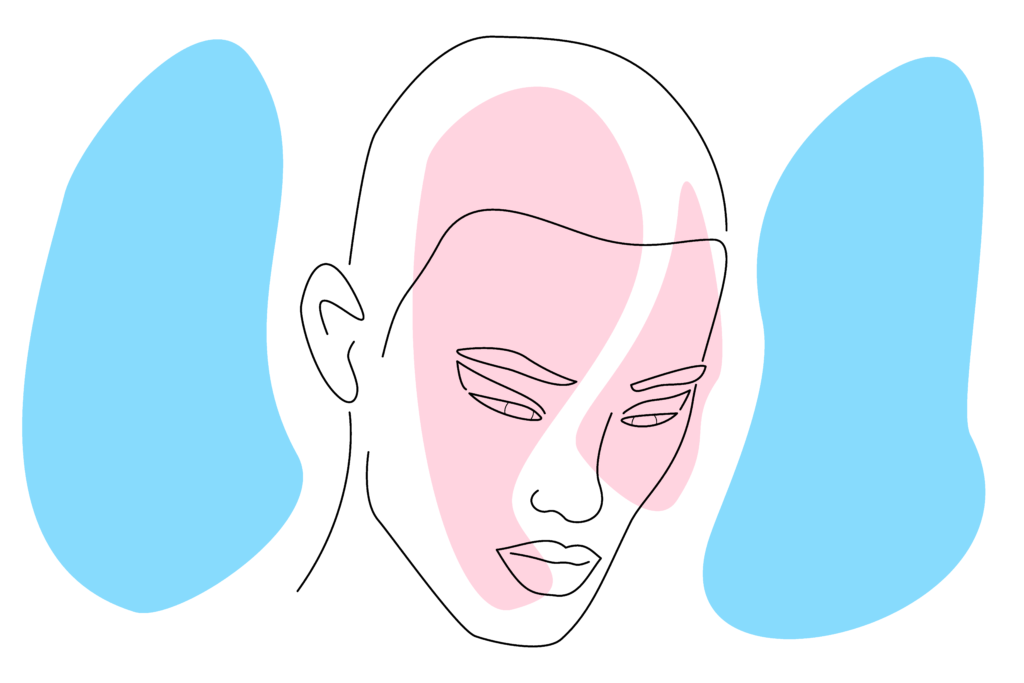
If you are interested in dating transgender people but want to avoid hurtful comments, we can help. It can feel like you are walking on a tightrope sometimes, but transgender people are people too, and as a rule of thumb you should learn to treat them as such.
Getting a feel for what to say to a trans person can feel difficult, and even more so when you are dating someone with gender dysphoria. But if you really want to know what to say to a trans person, or how you can make dating someone with gender dysphoria easier, then you’ve come to the right place.
Here is our guide on what microaggressions are and the kind that transgender people face when online dating. We’ll also give you tips on Do’s and Don’t for how to avoid using microaggressions.
What is a microaggression?
Microaggressions are defined as indirect, subtle, or unintentional instances of discrimination against members of a marginalized group. For transgender people, this can mean a range of questions and comments directed at their identity and history that can be upsetting.
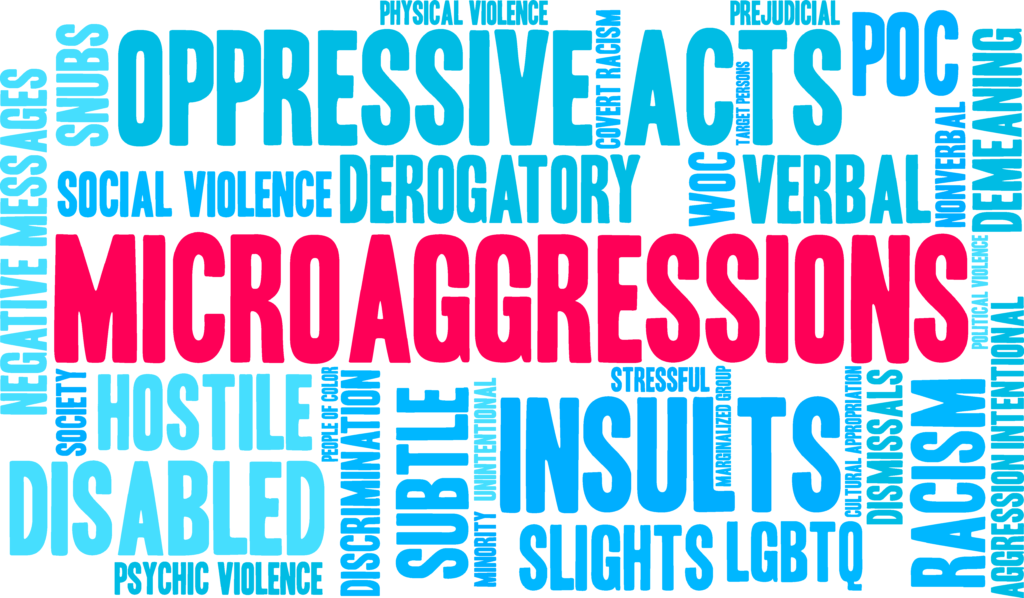
Often this is a result of people not seeing the individual as a person, and more so as a statistic or a type of spokesperson for the community.
This can have a powerful impact on an individual, making one feel inadequate or emphasizing feelings of isolation. Being aware of microaggressions and their impact on the LGBT community is a learning process, and sometimes it requires unlearning bad impulses and biases.
It is especially important to be aware of these instances when you interact with people in LGBT circles, and also when you want to date lesbian, gay, queer and transgender people.
Why trans people are vulnerable to microaggressions
Microaggressions which refer to the individual’s body call the body into question, and in turn their identity as transgendered. This can lead a trans person to feel insecure, objectified, ashamed, and even at risk of violence if the microaggressions escalate.
Microaggressions encourage moments of bodily examination on transgender people. Comments and questions about their transitioning, any potential sex-changes, and their appearance all focus on whether they “pass” as the gender they identify as.
The desire that inscribes those moments of bodily examination can soon turn to revulsion, either if the transgender person does not meet the standards of the person they are talking to or if they are insecure about their journey and appearance.
This can be compounded by gender dysphoria, which is a feeling of discomfort or distress that can happen when someone’s gender identity differs from the sex they were assigned at birth. Not fulfilling their own perception of their identity, or having someone criticize it, can be traumatic.
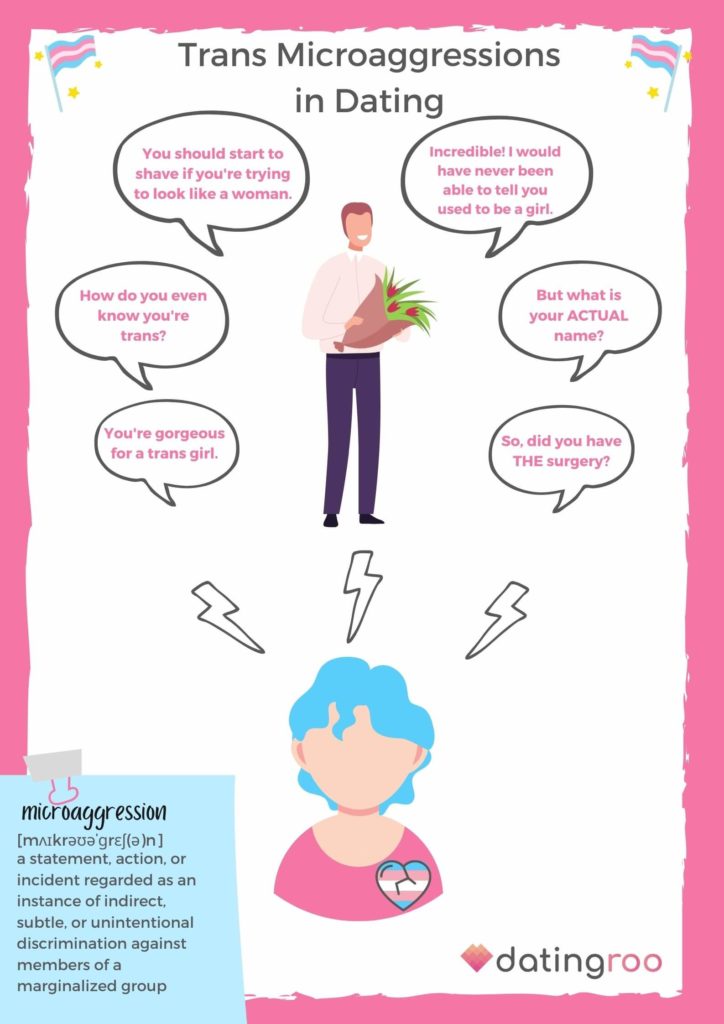
Other times, other people’s focus on transgendered individuals can turn toward a sexualized fetish of the individual, leaving them equally diminished as a person.
The result is that they may feel as if they are bouncing between views of trans people that fall into “desire/revulsion” dichotomies. Microaggressions against transgenders encourage a dehumanizing evaluation of their appearance and ability to present themselves.
Wondering if you are in a toxic relationship? Read here to see if that might be the case.
This is an objectifying experience, and a reductive line of questioning that leaves transgenders feeling vulnerable. Microaggressions highlight transphobia that lurks in the norm of cis-gendered people and can be frightening for their potential to impact anyone who opens themselves to others.
Examples of microaggressions toward trans people
There is no master list of microaggressions against transgender people that you can refer to when looking to avoid them. Most often, you just need to apply a bit of common sense and decency while you treat them as a person.
Respect is key.
Nevertheless, there are some examples of microaggressions we can provide to you in the form of “Do’s” and “Don’ts” that are useful when you meet and even want to date someone who is transgender.
Remember, not everyone is the same and will react identically. That’s part of the point. How someone perceives respect can differ from another person. If you make a mistake or feel as if you did, politely apologize and move on. Focus on their feelings, not your own.
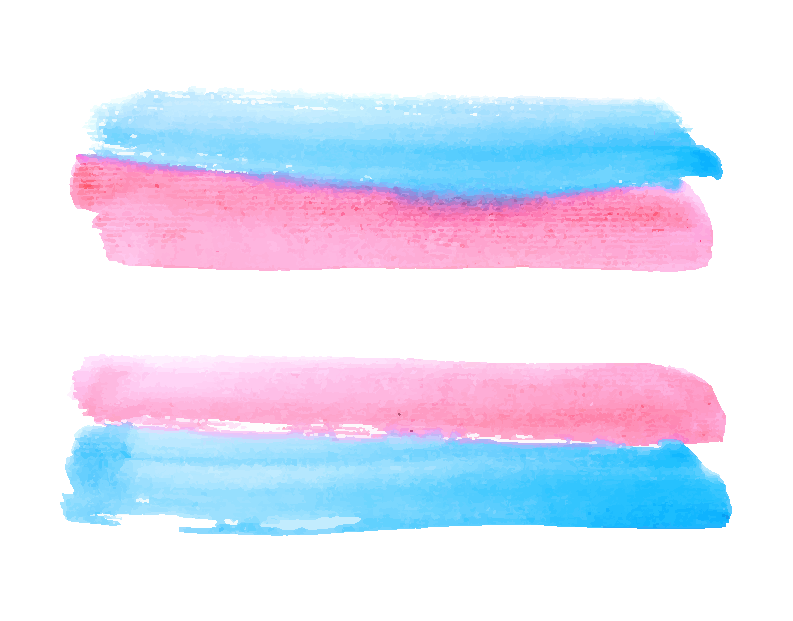
Do’s
- Be respectful of a person’s pronouns by asking them politely what they are, then commit to using them appropriately.
- Focus and refer to them by their current identity, not their former one
- Make sure to catch yourself and correct any mistakes when using their name or pronoun(s)
- Go out of your way to not say certain words, such as “real,” and “normal”, especially when referring to their gender
- Be patient, open, and sensitive to what transgender people say about your use of language
- People are more than their gender, so focus on who they are as a person
Don’ts
- Don’t assume someone’s gender or how they want to be called (pronouns)
- Don’t fixate on their genitals or ask questions about it
- Don’t focus on their genitals as the focal point for how you will refer to them
- Don’t prioritize someone else’s preferences based on how you feel about it over their own feelings
- Don’t deadname, which is when you describe someone based on their previous identity.
- Don’t be the person who tells others about a trans person’s previous identity
- Don’t use offensive terms to refer to someone
How to date a trans person
Some people wish to go beyond avoiding microaggressions and being a better ally to the community. If you are interested in dating a transgender person then you should take these three steps as a foundation for starting to date in the LGBT community.
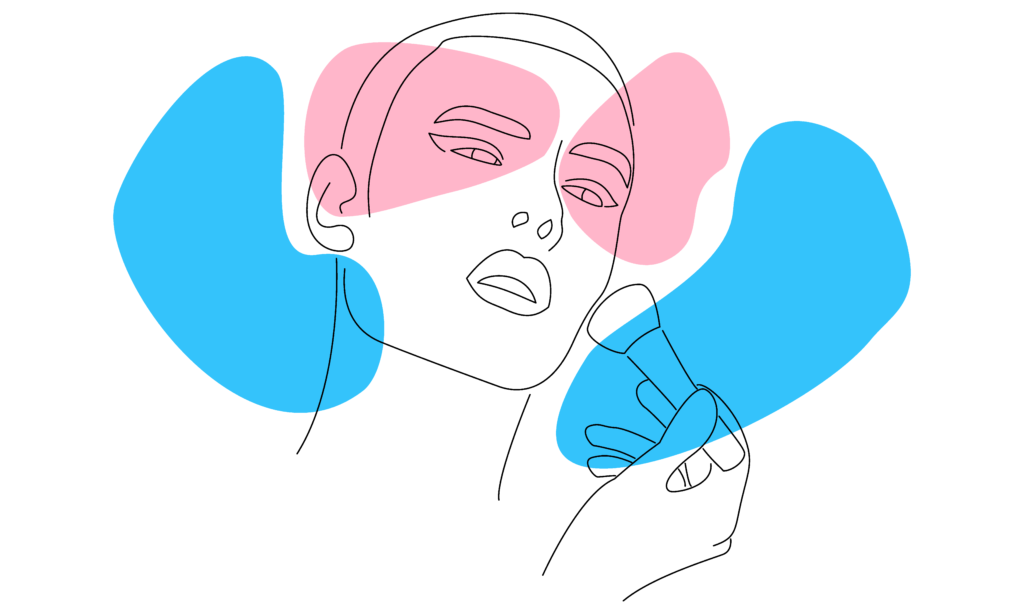
Step 1 – confront your own biases
Having an open mind as you begin to date trans singles is important for fostering a loving and mutually receptive relationship. Sometimes, biases can be formed without realizing it and may seem inconsequential.
Read here to learn more about the cycles of a toxic relationship.
Other times, these biases dance around a line between microaggressions and bigoted and need to be examined carefully. Some of these biases that commonly crop up in cis singles include:
- Comments such as “Trans people are not ‘real’ men or ‘real’ women. Dating a single trans person means you are dating a fake man or woman.”
- Belief that many singles in the trans community suffer from mental illness or are emotionally unstable
- Mistaken ideas of trans people always being unhappy with their bodies and in general, which translates into dating trans singles as a depressing sexless experience
If your date comes out to you as trans, be mindful and always show respect. If you like them, their gender identity will not change anything about that.
Remember, use pronouns that align with the gender of the individual as they want it to be used. Don’t make up a way to say that they are their old gender still by using pronouns they don’t identify with.
Step 2 – treat them like a person, not a google search result
It is inevitable that many singles who want to date a trans person will fixate on the “trans” label. When someone does this they presume a lot of ideas about the person in question, using them as a representative for the broader LGBT community.
Not all trans people, single or otherwise, are the same. When one fixates on the label and presumes that person’s identity, they are no longer looking to date a person but an idea of a person in that community.
Additionally, because some singles see transgenders as these kinds of representatives, they tend to use them as information resources. Many make the mistake of asking banal questions about transitioning that border on being microaggressions.

Being trans means different things to different people. Just like how not everyone has the same personality, so too do trans people have different views, experiences, and approaches to what it means to be trans.
Don’t treat a trans person as a resource tool. Just use something like google if you really have some questions about the basics. This brings us to our final step.
Step 3 – ask normal dating questions
Many first-time daters in transgender circles will focus on the identity of the person and center the conversation around the other “being trans”. This can result in microaggressions, and it also distracts from what the goal of a date should be: getting to know the other person for who they are.
Ask normal questions about dating. Treat them as the man or woman they identify as and get to know them as a person before all else. Ask questions such as “What is your favorite movie?” “What hobbies do you have?” and “What kind of foods do you like?”
Trans dating recommendations
Here are our top recommendations for trans dating services. Check them out today!

- Only singles looking for serious relationship
- Diverse community of all genders and sexualities
- Support team is by your side 24/7

- For: Adult relationships between trans men and women and their cis counterparts
- Available and successful worldwide
- Members: +94 million

- Large database of verified & attractive Asian and European singles
- Efficient communication tools for real relationships
- Top-level safety and professional support
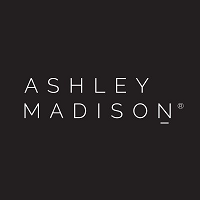
- Best for: Singles looking for no strings attached fun
- Free membership: Free registration, limited
- Users: 54 million

- A dating site that allows you to meet beautiful Asian, European and Latino singles
- Real-time communication with efficient tools
- Professional dating services
Finding a tinder for trans people
So where to find a good dating app or dating website? Although tinder is one of the most used services for a variety of dating experiences, it has only recently gotten to a point where it is useful for transgender singles. To pick up the slack, Transdr has stepped up as a platform for trans singles.
But why is it so hard to find a tinder-like service for transgender singles? The truth is that most conventional dating apps don’t always give satisfactory results. This is because it can serve as a site of fetishization, prejudice and disrespect for transgender singles.
Sometimes trans dating requires thinking outside the box a little and using new services that work much the same as tinder does. This is why Transdr works to function much the same as tinder while providing a safe, effective platform for dating.
Queer/trans-friendly dating apps
If you are looking for something that isn’t like tinder but is still queer and transgender friendly, then we would also recommend OkCupid, which has 22 gender options and 20 sexual orientation options. As a mainstream dating app, it is an excellent queer/trans-friendly app.
We would also suggest trying MyTransgenderCupid, which is a dating service run by one of the largest online dating services in the market for niche dating platforms. They ensure a safe, fun experience for singles dating as transgender, as well as those wishing to date transgenders.
Intersections of progressive movements and microaggressions
Microaggressions are a persistent problem in modern culture, experienced across a plethora of intersecting communities and progressive movements. Intersectionality, which draws attention to different forms of oppression associated with differing identity categories, highlights this reality.
Working to educate others on the issues that cross along lines of gender, sexuality, class and social status, race and ethnicity, age, (dis)ability, and more can go a long way toward reducing microaggressions. Doing so means a safer, friendlier, and more inclusive world.

Sometimes it requires patience to help people learn how these acts can be harmful, and why they are. With a little courage and resources, we can all take the time to improve on our awareness of microaggressions and how we can avoid using them, both for the LGBT community and others.